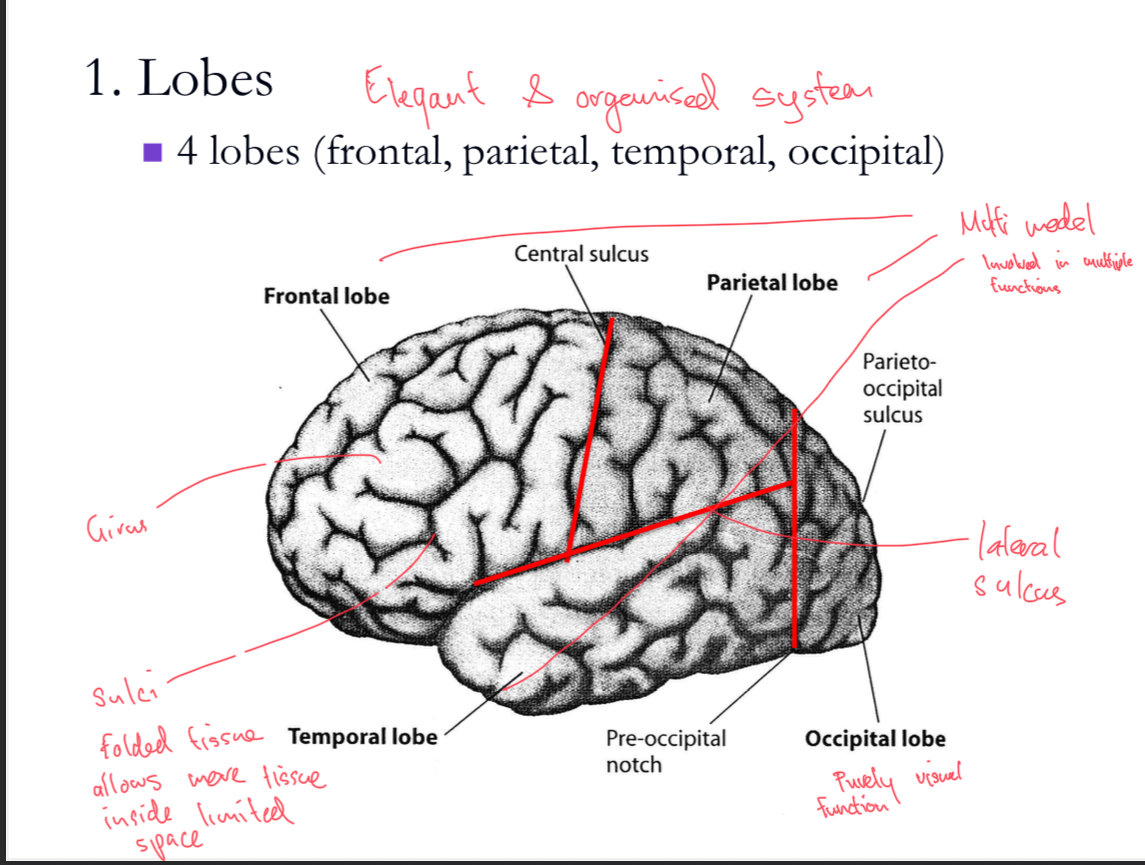L15 Temporal and Occipital Lobes
1/13
Earn XP
Description and Tags
Flashcards about the temporal and occipital lobes based on lecture notes.
Name | Mastery | Learn | Test | Matching | Spaced |
|---|
No study sessions yet.
14 Terms
Occipital Lobe Damage
Can cause blindness and blindsight.

Apperceptive Agnosia
Can be caused by carbon monoxide poisoning and results in the inability to recognize objects or peppery mask.
Temporal Lobe Lateral Surface Anatomy
Includes the Superior (auditory), Middle, and Inferior temporal gyrus (vision).
Temporal Lobe Medial Surface Anatomy
Includes the Medial temporal lobe. Tucked inside, critical structures for memory.
Superior Temporal Gyrus (A1) Damage Effects
Can lead to deafness, Wernicke’s Aphasia, and Auditory Agnosia (can identify frequency of sound but cannot say its a dog barking) due to its function as the auditory region of the brain.
Middle and Inferior Temporal Gyrus Damage Effects (V4)
Can result in Achromatopsia, Akinetopsia, Ventral Simultagnosia, and Associative Agnosia.
Right Medial Temporal Lobe Damage Effects
Causes impaired visual memory and difficulty recalling information, while copying abilities remain intact.
Left Medial Temporal Lobe Damage Effects
Results in impaired verbal memory, hearing is intact.
Patient H.M. Case Study
Underwent surgery that resulted in both retrograde and anterograde amnesia due to the removal of the medial temporal lobes.
Anterograde Amnesia
The inability to form new memories.
Retrograde Amnesia
Old memories are fine, recent memories cannot be stamped due to lack of MTL. H.M cannot remember recent memories before surgery
Mirror-drawing task and Tower of Hanoi
Demonstrates that patients with MTL damage can still acquire certain skills despite profound memory impairments.
Declarative (Explicit) Memory
Memory of facts and events; affected by lesions in the MTL.
Nondeclarative (Implicit) Memory
Memory for skills, habits, priming, simple nonassociative learning, and classical conditioning; not affected by lesions in the MTL.